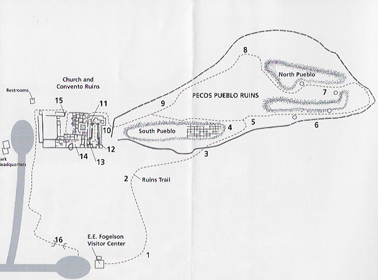
Location
After bridge #16 toward Visitor Center (N35D32'58.128 X W105D41'11.022)
Flowers first observed: 4/3/17
The Plants

The Plants w/Flowers
 |
 |
Flowers |
Pods |
Distribution
"Found on gravelly soils, rocky slopes, and roadsides, in sagebrush, piyon-juniper woodlands, open conifer forests, and subalpine meadows, from 6,000-9,000 ft. --- AZ, CO, NV, NM, UT" (SEINet)
Description
"Boechera species are difficult to tell apart and most floras give conflicting names to and details about these species. Click to read about the genus. Boechera fendleri has several characteristics that help separate it from other members of the genus: The lower part of the stem is hairy; the middle and upper stem is glabrous.Basal leaves are ciliate and surfaces can be quite hairy (see below) but may be glabrous. Basal leaves are commonly dentate. Upper stem leaves are glabrous but often ciliate margined near their tip. Flowers are small, sometimes white (usually lavender), upright, and their calyces are sparsely hairy. Fruits are upright when floral parts are still attached (upper right corner of second photograph at left), but droop to horizontal and often droop even more to a declining position. Stem leaves are clasping and often auriculate, i.e., they have ear-like lobes which droop to the side of the stem. (See the photographs below). Sereno Watson named this species Arabis holboellii var. fendleri in 1895 from a specimen collected by Augustus Fendler near Santa Fe in 1847. William Weber renamed the species Boechera fendleri in 1982 and that name is now widely accepted." (SW Colorado Wildfllowers)
Ethnobotanical Uses
None Found
Internet Links
